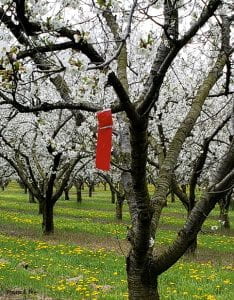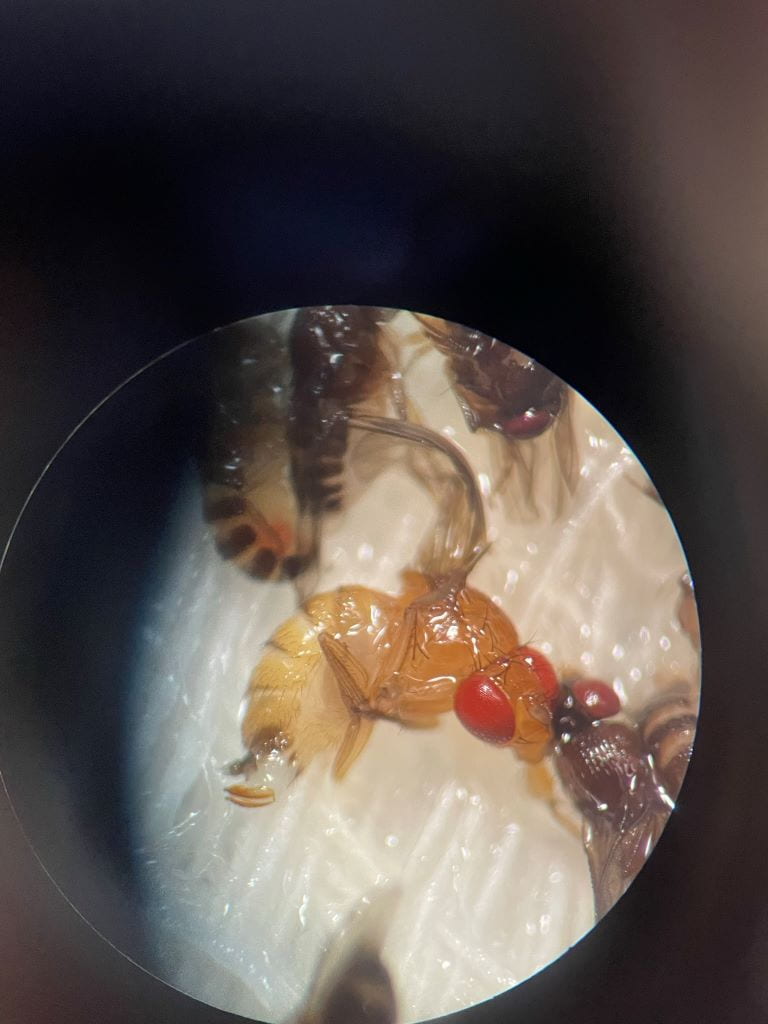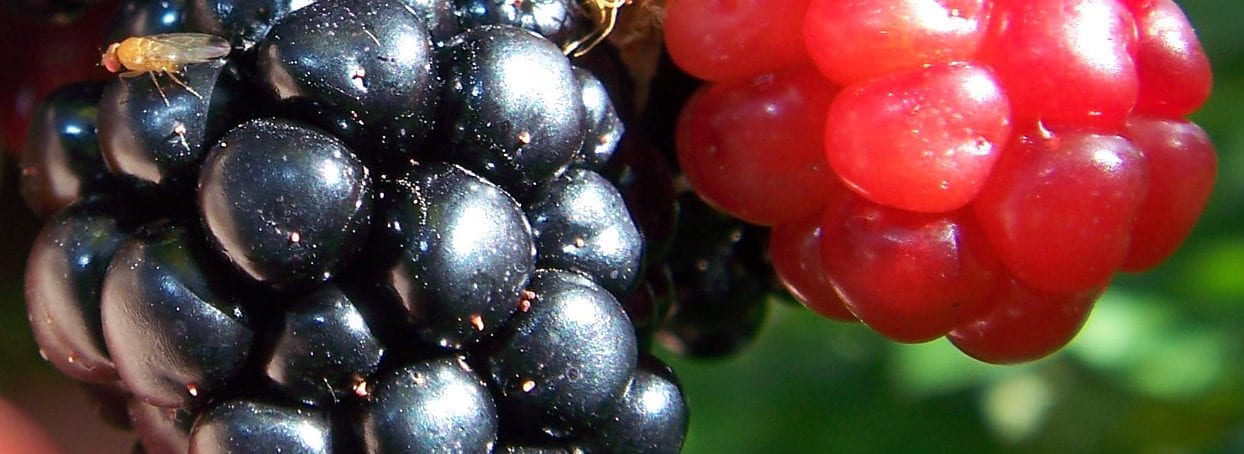SWD (Drosophila suzukii) is found all over New York state and is a pest to gardeners and fruit growers alike. If you have raspberries, blackberries, or blueberries likely you already have SWD in your bushes. SWD is native to Asia and was discovered in California raspberries in 2008. It gets its name from the spot on the wings of the males.
Cornell Cooperative Extension of St. Lawrence County, with the help of two Master Gardener Volunteers (Ken Kogut and Nancy Alessi), participates in a monitoring program for SWD through the New York State Integrated Pest Management (NYSIPM) Program https://blogs.cornell.edu/swd1/category/swd-info/
This year traps were set on July 6th with first catch on July 13th and sustained catches at two locations on July 20th with all locations trapping SWD by this date too. 2022 saw our first catch on July 28th with sustained catches in three locations on August 4th. Researchers suspect that it is because of our mild winter that more adults were able to survive and that is why we are seeing these pests earlier this year.


SWD eggs and larvae are edible so do not despair about your current crop, they will just add some protein to your diet. Harvesting your berries just before peak ripeness and immediately getting them into refrigeration (32 to 34 degrees Fahrenheit) will likely halt egg development or larvae growth. Unlike the fruit fly you have on ripening or decaying fruit in your home, SWD will deposit eggs in green or developing fruit. Females have a serrated ovipositor (egg laying organ) which allows for the laying of eggs in unripe fruit (see photo below). Eggs hatch into tiny, white larvae feeding on the fruit from the inside, leaving the fruit to look fine on the outside. Larvae will grow in the fruit until they pupate into adults. Multiple overlapping generations can occur with favorable conditions, higher temperatures and higher relative humidity.

Cornell Cooperative Extension does suggest aggressive management for commercial growers, but there are management tools that will work for the home gardener as well.
First and foremost, pick berries and cool immediately. This does not stop SWD from laying eggs in your berries, but it will help so you can enjoy your berry harvest. Second, make sure that you are cleaning berries from the ground or ones that go bad on the bush. Sealing this fruit in a bag and letting them cook in the sun will ensure that those larvae will not pupate into adults and continue the cycle. Third, control for humidity in your bushes. Prune bushes to maintain an open canopy and make sure to remove weeds below your plants, both of these methods will reduce the relative humidity in your bushes. Netting and spraying insecticides, always follow label instructions on any pesticide, are two more ways you can potentially control for SWD. Netting must be at least 80 gram (1.0 x 0.6mm) to be effective; 60 gram has been shown to be ineffective. SWD in California have been showing insecticide resistance, so if this is a method you use rotate what pesticides you use. This will hopefully reduce the likelihood of resistance. Visit the Cornell Fruit Resources page for more information: https://fruit.cornell.edu/spottedwing/management/
Recent research by Juliet Carroll, retired Senior Extension Associate, and Dr. Gregory Loeb, Professor of Entomology at Cornell AgriTech, has shown hummingbirds reduced SWD fruit infestation levels by up to 64% in field trials. You can read the Cornell CALS article, Hummingbirds might help control invasive berry pest here: https://cals.cornell.edu/news/2023/06/hummingbirds-may-help-control-invasive-berry-pests
Or you could read the published research in ScienceDirect’s January edition: https://cals.cornell.edu/news/2023/06/hummingbirds-may-help-control-invasive-berry-pests
You can also check out a recent What’s Bugging You: First Friday from NYSIPM on Spotted Wing Drosophila and Spiders: https://youtu.be/yRZzWzK6JUc
Nick Hamilton-Honey is the Natural Resource and Sustainable Energy Educator and the North Country Energy Navigator Volunteer Coordinator at Extension. They answer questions such as invasive species management, pond management, and energy efficiency; and present on topics ranging from nature in tech, bird watching, orienteering and outdoor survival, and so much more. If you are interested in volunteering with Extension, Nick would love to have you join as a Energy Navigator Volunteer. Please reach out to them. 315-379-9192 ext. 230 or nh327@cornell.edu
